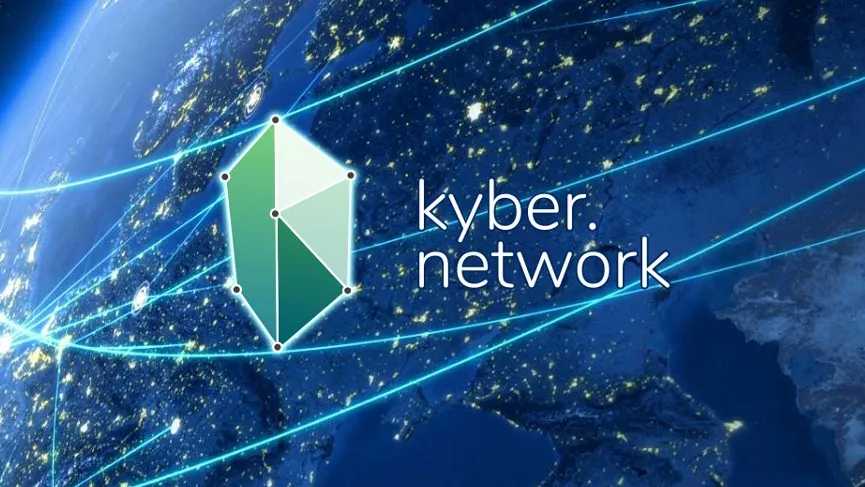
KyberNetwork, an on-chain protocol which allows the instant exchange and conversion of digital assets (e.g. crypto tokens) and cryptocurrencies (e.g. Ether, Bitcoin, ZCash) with high liquidity. Besides serving as an exchange, KyberNetwork also provides payment APIs that will allow wallet accounts to easily receive payments from any crypto token.
Oyente, the creators of oyente smart contracts and Smartpool have officially announced KyberNetwork, a new trustless, decentralized platform that will allow for instant trading and conversions between any crypto-assets. KyberNetwork uses an approach that incentives reserve managers to guarantee liquidity and enables trustless and instant convertibility of any tokens. KyberNetwork also allows for complex financial instruments like derivative options and forward contracts.
KyberNetwork is coming at a time when the ecosystem of crypto-assets is exploding in its diversity and the sheer number of tradable tokens and currencies. As more and more projects raise funds through the launching of platform tokens, the number of tokens in the market is continuing to increase. However, the limited options to liquidate tokens in the market makes convertibility of one token to another token a new challenge for both investors and operators alike.
Despite the decentralized and trustless nature of crypto-assets, the majority of trading of these assets is done on centralized exchanges, which are subject to internal fraud and external hacking.
Decentralized exchanges offer clear advantages, however, the existing offerings currently on the market fail to address the primary issue that is plaguing them, liquidity. A system with high liquidity would enable instant transactions on the block time that can be achieved securely and completely decentralized for any type of asset.
KyberNetwork solves this issue by introducing a new system for any user to trade any token instantly and completely securely with guaranteed liquidity. Their approach is through the utilization of reserve managers, who are incentivized by monetizing their otherwise idle assets. By serving trade requests from users, reserves earn profit from the spread determined by reserve managers. As the network gains more traffic through collaborations with wallet providers and various other token projects, reserve managers will benefit directly from the trading volume due to network effects within KyberNetwork.
The result is that KyberNetwork users can instantly trade any asset on the platform: someone can send token A to an intended recipient who wishes to receive the payment in token B in a single transaction, instantly on the block time.
Fast and Secure Transactions
KyberNetwork is block-instantaneous and it significantly reduces the buffer between when an order is made and when it is filled. As soon as the transaction which initiates the order gets accepted into a block, the trade is confirmed. This feature offers users greater trading security as it eliminates the vulnerability a result of the acceptance window of transactions that could be exploited by attackers. By design, KyberNetwork operator does not hold users’ tokens and orders are enforced by smart contracts, so these tokens are secured from theft losses.
API’s Enable Payments in any type of Crypto Token
KyberNetwork will also introduce a new smart contract interface that will allow existing wallets, which only accept certain specific tokens (e.g. one that only accepts REP, GNT, etc. but not others), to receive any existing or future token (e.g. PAY and CVC) without having to modify the token contract code (i.e. the recipient is not aware that the payment actually was proxied via KyberNetwork). In other words, it enables smart contracts and recipients to access a wider class of users and receive contributions and payments from any token that the platform supports.
Hedging Options and Forward Contracts
The illiquidity of crypto-assets results in highly volatile exchange rates between tokens due to irregular and unpredictable supply and demand. What’s more, unless the trading volume of a token is significant, hardly any exchange would warehouse the tokens, limiting token holders’ options to trade or liquidate a particular token. As a result, it is impossible for token holders to hedge their positions to reduce the risk of adverse price movements in the future.
KyberNetwork addresses this challenge by introducing derivative trading, including options and forward contracts.
Options – Option contracts allow users to hedge against adverse price movement for a fee known as a premium. A “call option” gives the owner of the contract the right to purchase a crypto-asset at an agreed price, while a “put option” allows the owner of the contract to sell a crypto-asset at an agreed price. The premium here will be calculated using the implied volatility of the underlying crypto-asset.
Forward Contracts – In a forward contract, involved parties agree to execute a trade at a later date at a price specified in the present. A forward contract will be useful in a case where token holders need a specified amount of tokens at a future date. For example, assuming that Alice has Melon tokens and she wishes to acquire some Ether to invest in an upcoming ICO in three weeks’ time. Her option is either to exchange Melon tokens for Ether now, or she could enter and purchase a forward contract due in three weeks to negate the risk of Ether’s price fluctuations, should she wish to hold on to her Melon tokens for a longer time or she is waiting for an event where she would receive her Melon tokens.
Roadmap
KyberNetwork will soon be releasing on testnet with their token launch event scheduled for later in 2017. They plan to engage several blockchain entities to jointly set up reserves in anticipation of trading demand, as well as to extend the influence and vision of KyberNetwork throughout the blockchain ecosystem.
A whitepaper from KyberNetwork is available now for reading.
